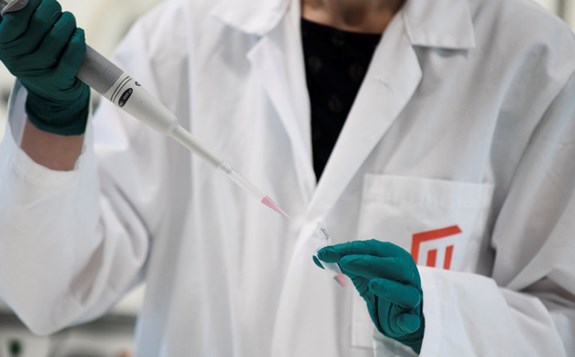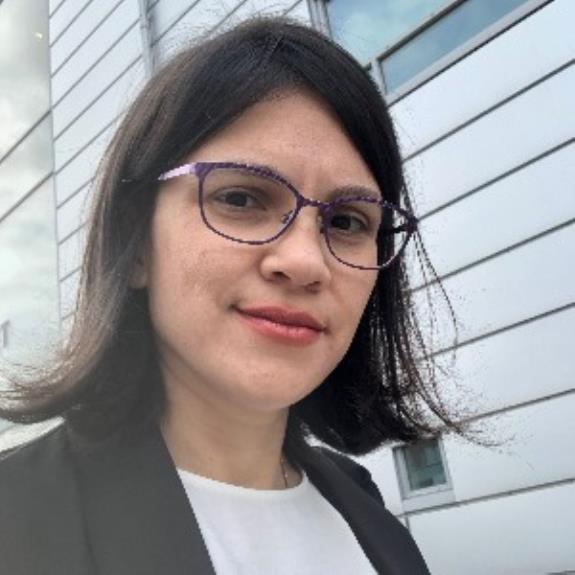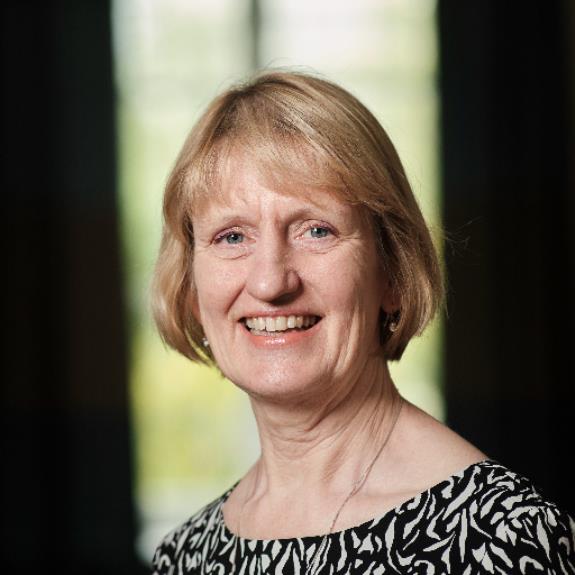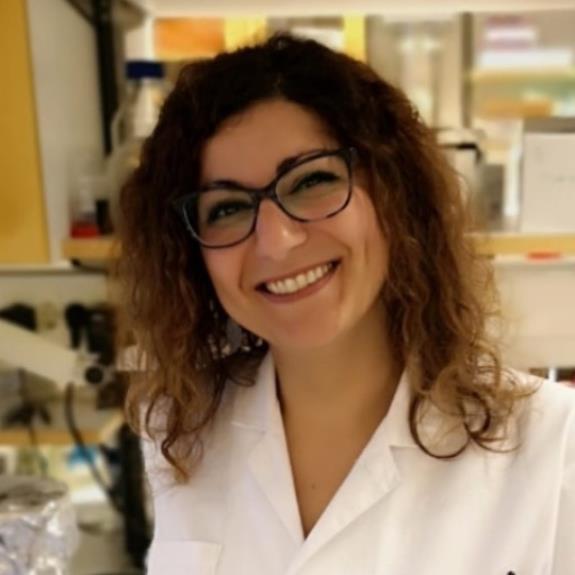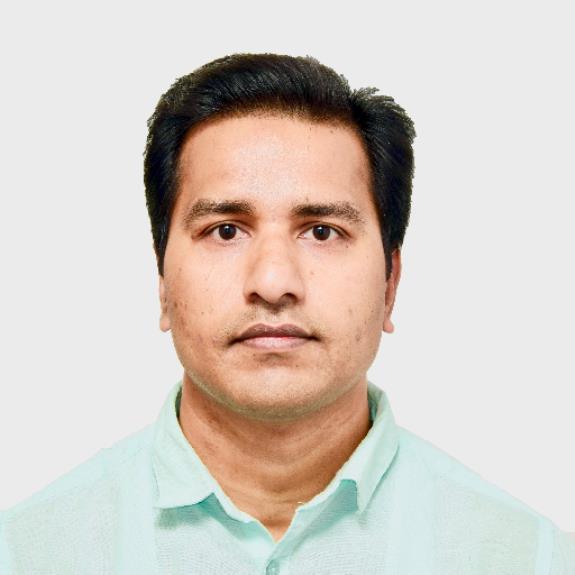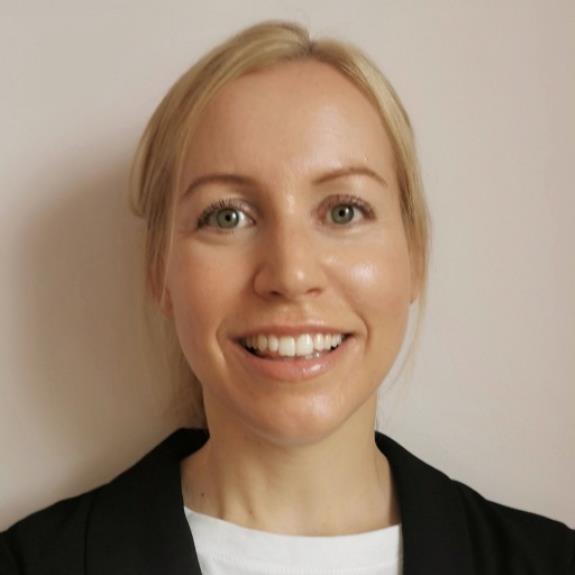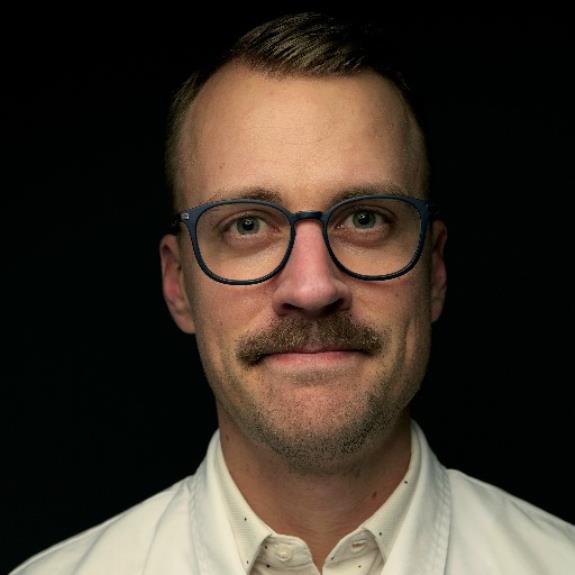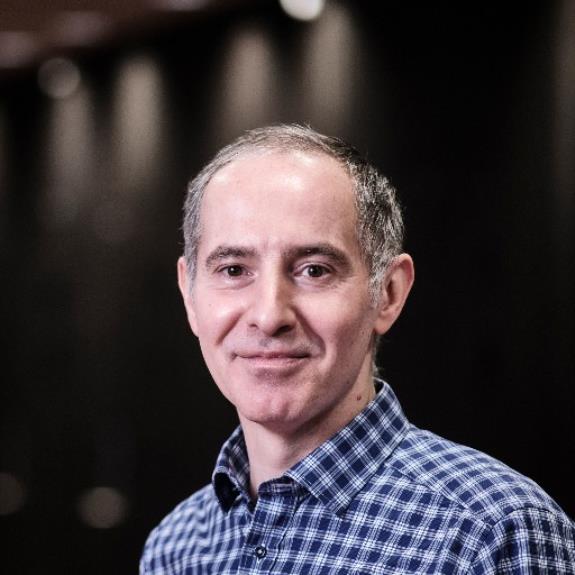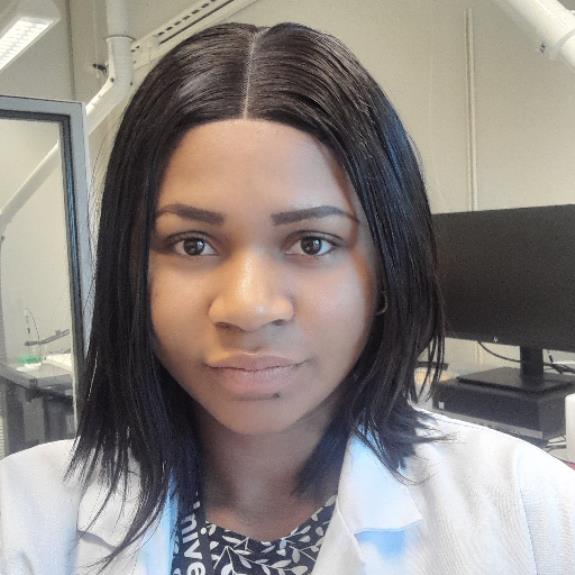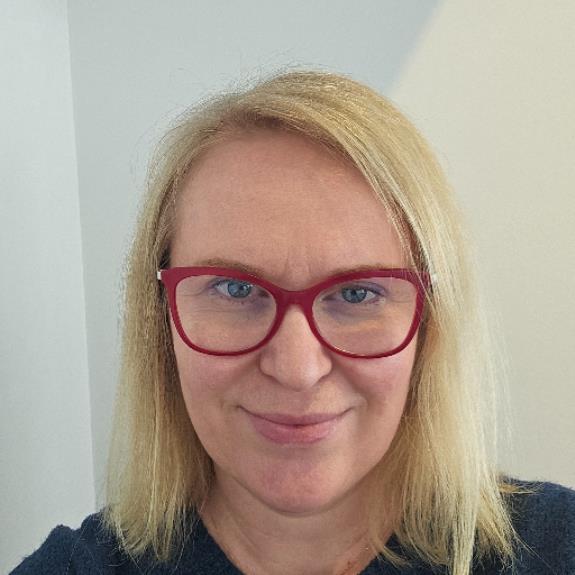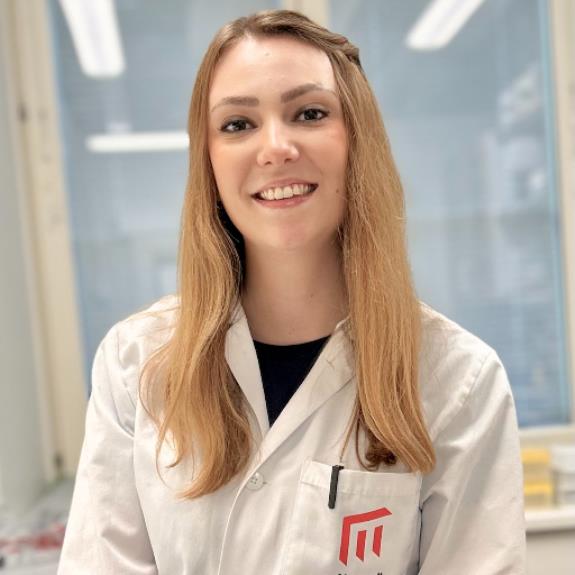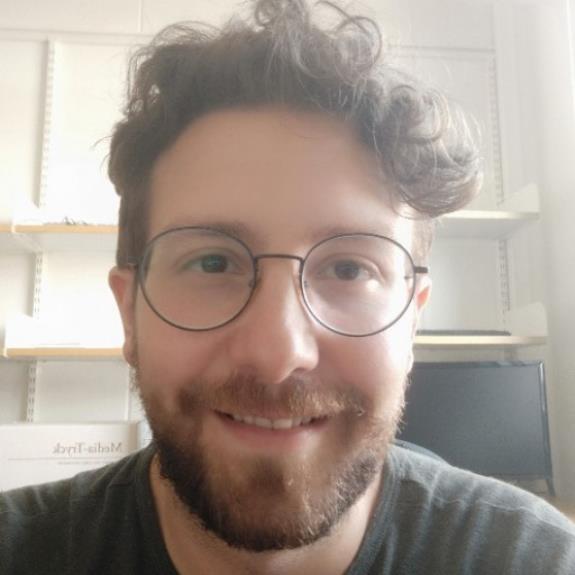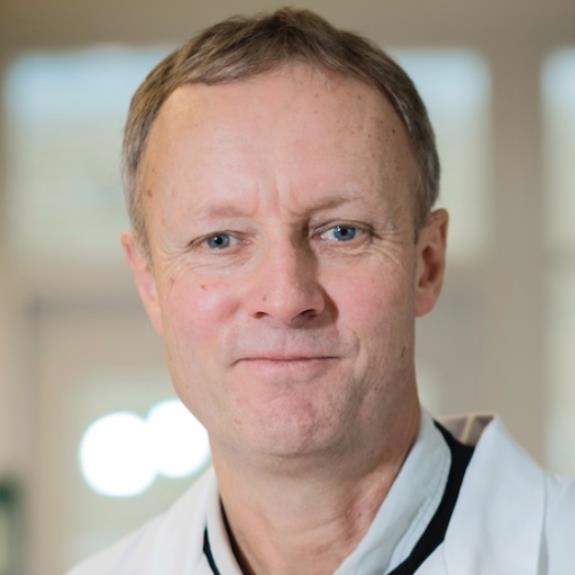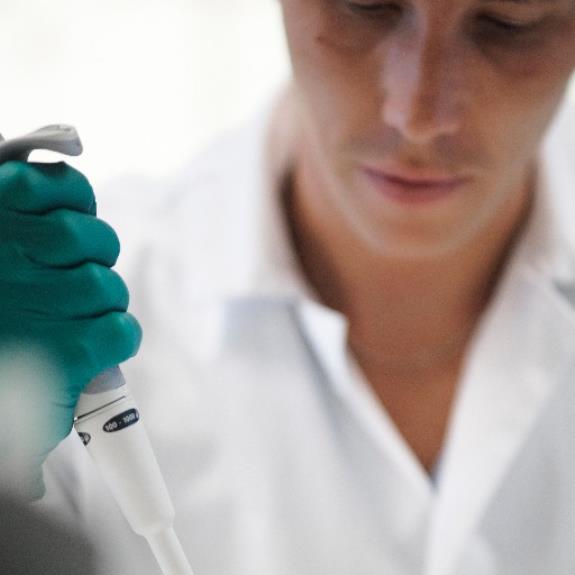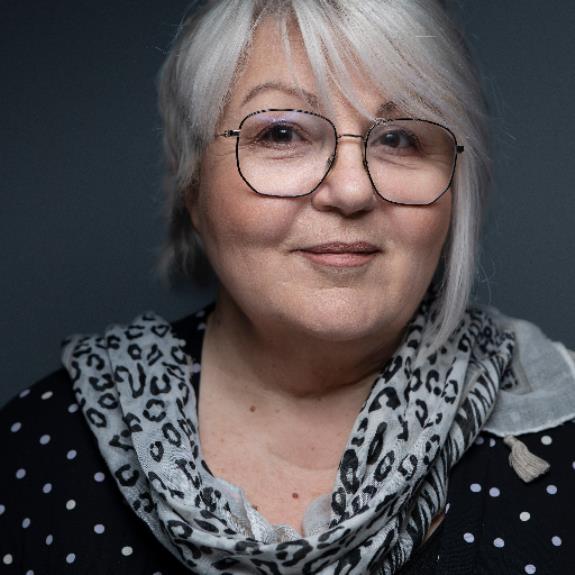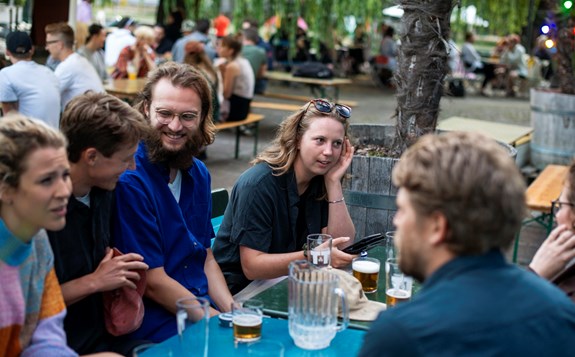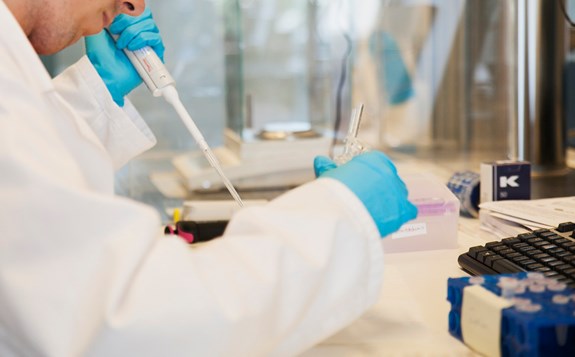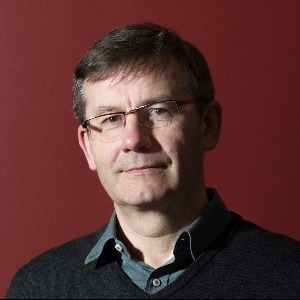We use cookies on this website. Cookies help us deliver the best experience on our website. Read about cookies.
-
- Education
- Education
- Programmes and courses
- Applications and admissions
- Tuition fees
- Scholarships
- Exchange studies at Malmö University
- Study Guidance
-
- After admission
- After admission
- Moving to Malmö
- Pre-orientation
- Arrival guide
-
- About studies at Malmö University
- About studies at Malmö University
- Why choose Malmö University
- Understanding university studies
- Connect with current students
On the page -
- Research
- Research
-
- Doctoral studies
- Doctoral studies
- Doctoral courses
-
- Doctoral schools
- Doctoral schools
- Education, Learning and Globalisation
- Doctoral school: Learning in Multicultural Societal Contexts
- ComBine
- Swedish National Graduate School in Science and Technology Education Research
- Doctoral school: Relevancing Mathematics and Science Education (RelMaS)
- Doctoral school: Sustainable Movement Education
- Finding ways in a time of great future challenges (FinnFram)
- Doctoral school: Pedagogy and Vocational Skills
- Doctoral school: Culturally Empowering Education through Language and Literature
- Research subjects
-
- Prominent research
- Prominent research
-
- Research centres
- Research centres
- Biofilms Research Center for Biointerfaces
- Malmö Institute for Studies of Migration, Diversity and Welfare
- Internet of Things and People
- Centre for Work Life and Evaluation Studies
- Centre for Sexology and Sexuality Studies
-
- Research publications
- Research publications
- Search publications
- Malmö University Press
- Research events
- Participate in a research study
On the page -
- Collaboration and Innovation
- Collaboration and Innovation
- Areas of collaboration
- Innovation
- Collaboration with students
-
- Collaborate with researchers
- Collaborate with researchers
- Labs and facilities
- Culture collaboration
- Support Malmö University
On the page -
- About us
- About us
-
- Faculties and departments
- Faculties and departments
-
- Faculty of Culture and Society
- Faculty of Culture and Society
- Department of Urban Studies
- Department of Global Political Studies
- School of Arts and Communication
-
- Faculty of Education and Society
- Faculty of Education and Society
- Department of Childhood, Education and Society
- Department of Sports Sciences
- Department of Natural Science, Mathematics and Society
- Department of School Development and Leadership
- Department of Culture, Languages and Media
- Department of Society, Culture and Identity
-
- Faculty of Technology and Society
- Faculty of Technology and Society
- Department of Computer Science and Media Technology
- Department of Materials Science and Applied Mathematics
- Faculty of Odontology
- University Dental Clinic
-
- Find and contact Malmö University
- Find and contact Malmö University
- Visit Malmö University
- News and press
- Map of the buildings (Google Maps)
- Merchandise
- Whistleblowing
- Management and decision-making paths
-
- Vision, objectives and strategy 2025
- Vision, objectives and strategy 2025
- Global engagement
- Sustainability
- Widened recruitment and participation
- Quality assurance work at the University
-
- Malmö Academic Choir and Orchestra
- Malmö Academic Choir and Orchestra
- Student work – video pieces
- Alumni & Friends
-
- Annual Academic Celebration
- Annual Academic Celebration
- Academic traditions
- Meet our new professors
- The University in a troubled world
On the page
Biofilms Research Center for Biointerfaces
for Biointerfaces
Biofilms Research Center for Biointerfaces is a multidisciplinary research centre in the interface between life and material sciences. Our vision is to shape novel solutions for improved health through excellent science in close partnership with industry. The centre’s activities focus on a wide range of phenomena associated with biointerfaces. The practical applications of the research are numerous and range from diagnostics to disease prevention and novel treatments.
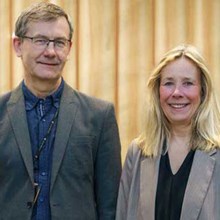
Malmö Neptunigymnasium and BRCB initiate collaboration
On March 22, the secondary school and adult education administration signed a collaboration agreement with the research centre Biofilms Research Center for Biointerfaces (BRCB), Malmö University. The collaboration includes, among other things, that students at Malmö Neptunigymnasium are given the...
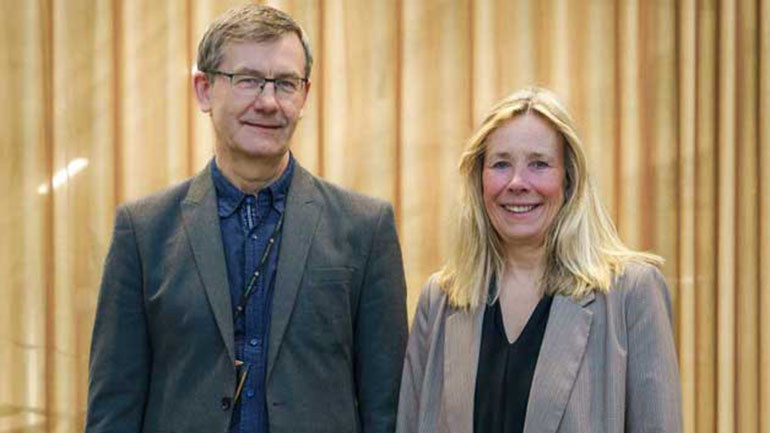
Malmö Neptunigymnasium and BRCB initiate collaboration
On March 22, the secondary school and adult education administration signed a collaboration agreement with the research centre Biofilms Research Center for Biointerfaces (BRCB), Malmö University. The collaboration includes, among other things, that students at Malmö Neptunigymnasium are given the opportunity to visit various university activities and environments and try out the equipment used by researchers and staff, through a week of workplace learning (WPL).
At BRCB, the focus is on developing new solutions for improved health through cutting-edge science in collaboration with industry. For example, Dr. Atefeh Shafaat has developed wireless biosensors that enable a more patient-controlled system, where infections can be detected much earlier through smart catheters, smart diapers, or smart wound dressings. Linn Piros, project manager at the secondary school and adult education administration, believes this gives students an insight into future healthcare. The plan is to offer ten students WPL placements starting in the spring term of 2025.
'The students here get a unique opportunity to follow research that can influence tomorrow's healthcare', says Linn Piros.
Anneli Schwartz, director of the secondary school and adult education administration, and Tautgirdas Ruzgas, director of BRCB and vice head of the BMV department, met to sign the agreement. The hope is to contribute to future solutions for improved health and competence supply within welfare and societal benefit.
Tautgirdas Ruzgas sees many benefits of the collaboration.
'We want to convey to younger generations what we do and why we exist. The students get to try out different things and feel what it's like in the workplace, which is important. We want to give something back so the younger generation can make an educated choice.'
Anneli Schwartz emphasizes the uniqueness of the collaboration:
'There are many professional roles and contributions to future development, in technology and health. This is something completely new. We remove the one-sided thinking about what career path secondary education programmes should lead to.'
Anneli Schwartz concludes that it is an important day for the Secondary and adult education administration. She explains that the agreement enables collaboration with a field of science they have not previously worked with.
-
 News | Published: 18 April 2024
News | Published: 18 April 2024
Large donation to water research at Malmö University
Malmö University has received a significant donation to develop...
-
 News | Published: 14 November 2023
News | Published: 14 November 2023
Wireless biosensors can relieve healthcare system burden
A wireless biosensor, developed by a Malmö University researcher...
-
 News | Published: 2 November 2023
News | Published: 2 November 2023
The joys of researching next door to two world-renowned largescale facilities
Two academics have high expectations of two largescale research...
-
 News | Published: 27 September 2023
News | Published: 27 September 2023
New smart solutions could replace current infection testing
New technology could pave the way to a future of rapid testing i...
-
 News | Published: 12 July 2023
News | Published: 12 July 2023
Cholesterol is only dangerous in the wrong company
We are increasingly aware of the concepts of good and bad...
-
 News | Published: 1 June 2023
News | Published: 1 June 2023
Researcher awarded fellowship at prestigious American university
An opportunity to strengthen his expertise awaits Anil Incel, a...
-
 News | Published: 3 May 2023
News | Published: 3 May 2023
Researchers investigate the vitamins in our beauty products
We know that dry skin can be relieved by creams containing...
-
 News | Published: 5 April 2023
News | Published: 5 April 2023
In search of a more effective mouthwash
A commonly used ingredient of prescribed mouthwash can lead to...
-
 News | Published: 26 January 2023
News | Published: 26 January 2023
Organisers of self-assembly of lipids ‘retreat and meet’ event looking forward to seeing you
Self-assembly of lipids served a vital role in the delivery of...
-
 News | Published: 26 January 2023
News | Published: 26 January 2023
In search of the optimal migraine medicine
In order for migraine medication to be effective, it is vital...
-
 News | Published: 19 January 2023
News | Published: 19 January 2023
New research project hopes to detect Parkinson's and cancer at an earlier stage
Denis Music, a professor at the Department of Materials Science...
-
 News | Published: 11 January 2023
News | Published: 11 January 2023
Detecting new virus variants is key
Annual vaccinations against seasonal flu have become a way to...
-
 News | Published: 27 October 2022
News | Published: 27 October 2022
Putting pea seeds under the microscope to find the food of the future
How do you create a plant-based steak with the perfect texture,...
-
 News | Published: 25 May 2022
News | Published: 25 May 2022
Malmö University prepares to receive a Ukrainian researcher
Malmö University is among a number of Swedish higher education...
-
 News | Published: 4 May 2022
News | Published: 4 May 2022
Alternatives to traditional methods for detecting skin cancer explored
An early diagnosis is crucial to be able to treat skin cancer...
-
 News | Published: 27 April 2022
News | Published: 27 April 2022
Heat waste an important part of the energy puzzle
As Europe faces an energy crisis, and warnings from scientists...
-
 News | Published: 22 April 2022
News | Published: 22 April 2022
Building competence to develop better biological medicine formulations
Solidification of protein components could increase the...
-
 News | Published: 20 April 2022
News | Published: 20 April 2022
New technology can make health checks easier and more accessible
Conventional health checks can be both time-consuming and contai...
-
 News | Published: 8 April 2022
News | Published: 8 April 2022
Understanding saliva could lead to better dental hygiene products
Salivary pellicles provide protection from a number of dental an...
-
 News | Published: 24 February 2022
News | Published: 24 February 2022
Plastic antibodies can find biomarkers for cancer
Sialic acid can be used as a biomarker for cancer and also plays...
-
 News | Published: 17 December 2021
News | Published: 17 December 2021
Investment contributing to a plant-based food future made
A new process for the production of nutritious vegan cheese is...
-
 News | Published: 23 November 2021
News | Published: 23 November 2021
New instruments to help researchers gain unique knowledge about cell wall surfaces
Swedish universities, institutes and companies collaborate on...
-
 News | Published: 9 November 2021
News | Published: 9 November 2021
“Fishing” for biomarkers could improve cancer diagnostics
Biomarkers can show if we carry a particular disease, detecting...
Research highlights
Epitope MIPs to detect periodontitis biomarkers
Epitope MIPs to detect periodontitis biomarkers
MIPs were made based on epitope sequences of enzymes produced by P. Gingivalis. They are selective to their imprinted template and bind with high affinity to their targets, extracted from bacterial cultures. This paves the way for effective diagnostic methods for periodontal disease.
Washing method with environmental benefits
Washing method with environmental benefits
To reduce greywater pollution and environmental pressure on aquatic ecosystems, it is important to investigate new washing and cleaning methods. A new study shows that washing with purified water only, is almost as efficient as using traditional washing with detergents.
Cholesterol affect Covid-19 binding
Cholesterol affect Covid-19 binding
Cholesterol affects the extent of coronaviruses binding and fusion to cellular membranes. The severity of Covid-19 infection is correlated with lipid disorders. In this work, the Spike SARS-CoV-2 protein, which coats the SARS-CoV-2 virus, was shown to change how lipids are exchanged by HDL.
Facts and figures
Here, figures and facts for the year 2023 are compiled. People, partners, granted applications, distributed funds, projects and publications are presented.
Facts & Figures 2023: Biofilms Research Center
for Biointerfaces
The Research Centre in figures
-
14
Professors
-
43
PhD and Post docs
-
28
Assoc. Prof. and lecturers
Our research
Researchers at the centre include a wide range of experts from the fields of chemistry, biochemistry, materials science, cell and molecular biology, mathematics and microbiology. These experts, with overlapping interests, are advancing research in three core areas:
- biobarriers and pharmaceutical design;
- biofilms at interfaces; and
- smart material at interfaces.
Biofilms at interfaces
Microorganisms have a strong tendency to associate with surfaces and form adherent microbial communities, known as biofilms. Within this field, we study mechanisms by which bacteria adapt to and survive in the biofilm environment, as well as studying the salivary and mucosal barrier.
The research in detail
Biotherapeutics
Bacterial proteases are a driving force for the inflammatory responses involved in both periodontitis and cardiovascular disease. Our aim is to develop advanced technological tools based on an array of biomarkers (bacterial proteases and inflammatory mediators) to aid the identification of individuals at risk of severe alveolar bone loss disease, as well as the prediction and treatment of periodontal disease and associated inflammatory disorders.
Oral microbiology
In any environment, macromolecules and micro-organisms have a strong tendency to associate with surfaces and form adherent microbial communities, so-called biofilms, which are now recognised as the cause of most infectious diseases. Our goal is to understand the mechanisms by which oral bacteria acquire virulence in biofilms and to identify key points of intervention. We anticipate that our results will contribute to the development of future antimicrobials that target disease-inducing properties in biofilms rather than specific microorganisms.
Saliva research
Our main focus is the study of salivary pellicles — the film of nanometric dimensions that forms immediately upon contact of saliva with almost any type of surface. Pellicles play an important role in the maintenance of oral health, as they protect and lubricate oral surfaces. Our aim is to better understand the mechanisms underlying salivary lubrication. We also study the mechanisms underlying the protection offered by salivary pellicles against dental erosion and how this can be improved by complementing acidic beverages with anti-erosive compounds.
New methods and instruments
We are developing instruments that will allow structural studies of very thin and soft films under load and shear by means of neutron scattering and reflectometry. This is being carried out in collaboration with ESS and the two other big neutron facilities in Europe. We expect that this will be useful to apply in a broad range of fields, as soft-matter thin films are ubiquitous both in natural and artificial systems, for example, in the macromolecular layers that are often found at the solid/liquid interface in colloidal dispersions and biomedical implants.
Smart materials at interfaces
Smart materials at interfaces include bioelectronics (biosensors and biological power sources), oral implants and artificial biomimicry with biological applications.
The research in detail
Artficial biomimicry
Biomimicry (defined as the imitation of life or nature) is used in biomedicine and biotechnology to develop novel treatments and diagnostic methods. We focus on two major areas within biomimicry. The first being the development of novel diagnostic tools for cancer. And secondly, biomimetic systems for better understanding of the onset and treatment of diseases including atherosclerosis and bacterial infections.
Finding new and better ways to diagnose and treat cancer is one of a pressing task for researchers. Early diagnosis, where the cancer is still curable, is therefore crucial. This emphasises the need for sensitive, robust and affordable diagnostic tools that can sense the cellular state, commonly in the form of tumour-specific protein markers, early on in the process. We are developing and using molecularly imprinted polymers, plastic antibodies and other smart materials to detect and sense previously inaccessible tumour markers and discover novel disease biomarkers.
Biodegradable implants
The treatment of bone fractures and bone defects often requires the placement of metal plates or screws that joins the broken bones and allows them to heal. They are typically made of titanium or stainless steel, which functions well to stabilise the bone. However, as these plates or screws remain in the body, they can cause pain or other complications and often require the patients to undergo more surgery to remove the metal. We are studying implants made of magnesium – a metal with good mechanical properties – because it dissolves in
Biosensors and implantable bioelectronics
Research on biosensors and implantable bioelectronics is focussed on development of specific analytical devices and methods for monitoring clinically relevant analytes and biomarkers, as well as the development of potentially implantable electric power devices. It includes synthesis and characterisation of nanomaterials, development of novel sensing and power generating principles, as well as assessment of biosensor and biofuel cell performance in clinical and implantable situations. Our research strength lies in electrochemical sensors and enzymatic fuel cells. Lately, we have exploited biosensor approaches for the investigation of processes at biological barriers, tested enzymatic fuel cells in human blood under homeostatic conditions, as well as disclosed a new type of bioelectronic device – self-charging biosupercapacitors.
Cancer diagnostics
Finding new and better ways to diagnose and treat cancer is one of the most pressing tasks for researchers today. We use molecularly imprinted polymers to detect, sense and image previously inaccessible tumour markers and discover novel disease biomarkers with the aim of detecting cancer at an early stage.
Mathematical modelling
Scientific computing and simulations of phenomena on micro and macroscopic scales is a field of great scientific importance. General mathematical techniques, such as differential equations, combined with computational methods, allow a very broad range of applications. Our main focus is on three different areas: computational quantum physics; modelling of infectious diseases; and resonance spectrum for stratified media.
New methods and instruments
In collaboration with MAX IV, we are building sample environments to be used in tomography synchrotron beamlines. This will allow the study of how changes in the ambient conditions effect, for example, the structure and morphology of samples that have synthetic or biological origins. We are also developing methods for monitoring the interaction of formulations that comprise, for example, microparticles with biological barriers. These methods have a clear application in non-invasive drug delivery
Biobarriers and pharmaceutical design
Biobarriers and pharmaceutical design include pharmaceutical formulation, transdermal and mucosal drug delivery as well as hydration of biological interfaces, proteins and nanoporous materials.
Visit the project page for Biobarriers – Health, disorders and healing
The research in detail
Biobarriers
We focus on advancing the knowledge of the key physicochemical properties of biointerfaces, and how they determine the interactions with biomolecules in solutions. In order to achieve this, we develop biomimetic systems that aim at mimicking specific biobarriers in an easily producible and reproducible manner. The biobarriers we are interested in include cellular membranes, plant cell walls and blood vessels. Currently, we are applying these biomimetic systems to improve our understanding of the onset and treatment of various diseases such as atherosclerosis and bacterial infections.
Hydration of biological interfaces, proteins and nanoporous materials
The functional properties of biological materials and nanomaterials are strongly dependent on their interactions with the surrounding environment, where the presence of water in the form of liquid or vapour is inevitable. We have a special interest in nanoporous materials, such as mesoporous silica, and we study their hydration, characterisation and interactions with organic molecules and biomolecules. We also study the hydration of carbohydrate materials, such as cellulose. In the drug delivery field, we work with the interaction of solid excipients with water; hydration of proteins; hydration and phase transitions in lipids; and hydration of biological barriers.
Pharmaceutical formulation
In the development of transdermal and topical formulations, it is important to understand how formulation ingredients interact with the molecular components of the skin barrier and thereby influence its macroscopic barrier properties. Our research activities focus on the effects of commonly used excipients and other chemicals, such as penetration enhancers, on the molecular, as well as the macroscopic, properties of the skin membrane. We also investigate how nanomaterials, such as mesoporous silica particles, can be used in controlled release applications. The advantage of mesoporous silica, such as MCM-41 and SBA-15, is that these materials have remarkable properties due to their well-defined structure with tunable pore diameter and narrow pore size distribution, which can be optimised for loading and controlled release of drugs or biomolecules.
Transdermal and mucosal drug delivery
The skin barrier (the stratum corneum) is an effective permeability barrier. Despite this, the skin is an attractive alternative to the oral route for drug delivery because it avoids first-pass metabolic degradation, which can be an important advantage for certain drugs. Two common strategies to overcome the skin barrier for increased transdermal drug delivery are to increase skin hydration and add a penetration enhancer. Our research focuses on how hydration affects skin permeability, with and without penetration enhancers. Our approach is to combine several experimental methods to obtain both macroscopic and molecular-scale information on how hydration and penetration enhancers influence the stratum corneum.

Biobarriers - Health, disorders and healing
Disorders of biological barriers such as skin and mucosa affect everyone from infant to elderly, and dermatological findings are often the first manifestations of systemic disease.
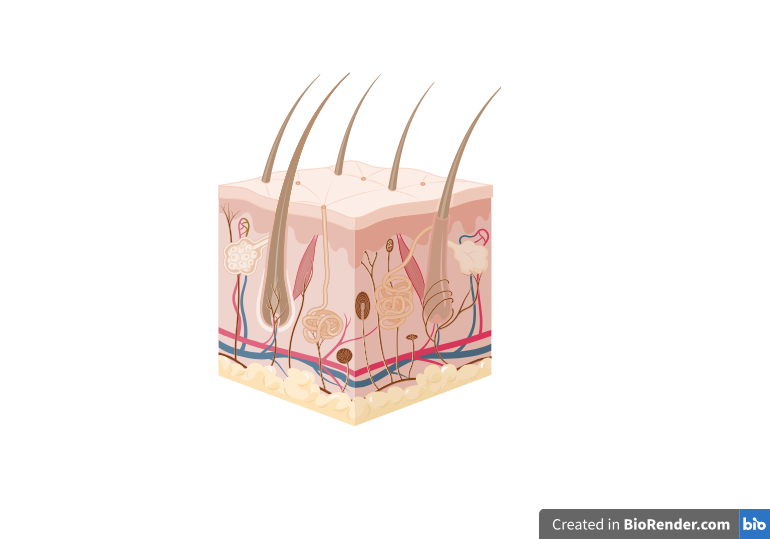
Biobarriers - Health, disorders and healing
Disorders of biological barriers such as skin and mucosa affect everyone from infant to elderly, and dermatological findings are often the first manifestations of systemic disease.
It is becoming more and more evident, that healthy biobarriers depend on the microbiota, physicochemical properties of mucosa or stratum corneum structure (the dead or less biologically active tissue), and an adequate immune defense mainly residing in the viable tissue.
In collaboration with industry, we are looking for solutions to improve the health and healing of biobarriers.
Biobarriers Scandinavian Hub
The profile will further expand existing collaboration with regional universities and industry to form a strong hub for topical drug delivery and biobarrier (skin, mucosa) research and education in Scandinavia.
Biobarriers: Insights
The Why and How of Ultrasmall Nanoparticles
The Why and How of Ultrasmall Nanoparticles
Ultra-small nanoparticles have very dynamic and reversible protein corona and thus immune cells cannot “see, or catch” them well. Ultra-small nanoparticle-protein interaction is very dynamic, similar to protein-protein interaction. This article might be important for your work with nanoparticles or teaching about nanoparticles.
Researchers, publications and projects
We are always interested in new collaborations with academia and industry. Please contact our researchers if you have any questions.
Jonas Becktor
Eva Bengtsson

Sebastian Björklund

Petri Gudmundsson

Johan Hektor

Sana Khayyamifar

Lindsay Richard Merte

Zdenka Prgomet

Felix Roosen-Runge

Tautgirdas Ruzgas
-
2024 | Article in journal
Oral biofilm composition and phenotype in caries-active and caries-free children
Gabriella Boisen, Susanne Brogårdh-Roth, Jessica Neilands, Alex Mira, Miguel Carda-Diéguez, Julia R Davies
-
2024 | Article in journal
Treatment effects of two pharmaceutical skin care creams for xerotic feet among persons with diabetes: Rationale and design of a two-armed double blind randomized controlled trial
Anna Ericsson, Karin Borgström, Christine Kumlien, Magdalena Annersten Gershater, Tautgirdas Ruzgas, Johan Engblom, Petri Gudmundsson, Victoria Lazer, Skaidre Jankovskaja, Eva Lavant, Sophia Ågren-Witteschus, Sebastian Björklund, Saman Salim, Mikael Åstrom, Stefan Acosta
-
2024 | Article in journal
Amorphous TiNiSn thin films for mechanical flexibility in thermoelectric applications
Sana Khayyamifar, Grzegorz Sadowski, Johan Hektor, Denis Music
-
2024 | Article in journal
Structure and function of skin barrier lipids: Effects of hydration and natural moisturizers in vitro
Irene Sagrafena, Maxim Morin, Georgios Paraskevopoulos, Emelie J. Nilsson, Iva Hrdinová, Andrej Kováčik, Sebastian Björklund, Kateřina Vávrová
-
2024 | Article in journal
Heme: A link between hemorrhage and retinopathy of prematurity progression.
Tamás Gáll, Dávid Pethő, Katalin Erdélyi, Virág Egri, Jázon György Balla, Annamária Nagy, Annamária Nagy, Szilárd Póliska, Magnus Gram, Róbert Gábriel, Péter Nagy, József Balla, György Balla
-
2024 | Article in journal
Accessing self-diffusion on nanosecond time and nanometre length scales with minute kinetic resolution
Christian Beck, Felix Roosen-Runge, Marco Grimaldo, Dominik Zeller, Judith Peters, Frank Schreiber, Tilo Seydel
-
2024 | Licentiate thesis, comprehensive summary
Thermoelectric properties of Mg 3 Sb x Bi 2−x thin films
Grzegorz Sadowski
-
2024 | Article in journal
Rational Design and Evaluation of Photoactive Molecularly Imprinted Nanoparticles for Tetracycline Degradation Under Visible Light
Yadiris Garcia, Joao Aguilar, Laura Polania, Yorley Duarte, Börje Sellergren, Veronica A. Jimenez
-
2024 | Article in journal
Salivary Proteins and Metabolites as Caries Biomarkers in Adolescents
Kristian Havsed, Miguel Carda-Diéguez, Helen Isaksson, Malin Stensson, Emma Carlsson, Henrik Jansson, Daniel Malmodin, Anders Bay Nord, Claes Wickström, Alex Mira
-
2024 | Article in journal
Reaction of hydrogen peroxide with amorphous Ti–O surfaces
Denis Music, Andrei-Ioan Mariș, Sana Khayyamifar, Grzegorz Sadowski, Tautgirdas Ruzgas
-
Research project
Biobarriers – Health, disorders and healing
-
Research project
Bioinspired drug carrier platform for inhalation therapy of antibiotic molecules
-
Research project
Biomimetic SARS-C oV-2 receptors as host cell models, diagnostic tools and for antiviral research
-
Research project
Biomimetic sensors for monitoring of Norovirus and SARS-CoV-2 genetic variants in water
-
Research project
Correct medication list at care transitions
-
Research project
Detection and sensing of predictive biomarkers for periodontitis
-
Research project
Enzymatic activity in oral biofilms – biotechnological applications and putative predictive biomarkers for oral health and disease
-
Research project
HEALTHCOM- Healthy communities in ageing societies – participatory research with elderly immigrants and refugees living in a Nordic...
-
Research project
Hierarchical nanoengineered assemblies of titania (Hi-NEAT)
-
Research project
Human mucosae: from molecular understanding to tissue engineering and novel therapeutic opportunities
-
Research project
Investigation of multivalent pathogen inhibition and sensing using rSAM-based decoy nanoparticles
-
Research project
Liproprotein structure-function and disease development: from atherosclerosis to covid-19
-
Research project
Multilayer architecture of H2O2 non-enzymic sensors for biomedical applications
-
Research project
Next generation of cancer models for improved predictivity in drug development – 3D colorectal cell growth with the use of supporting spide...
-
Research project
NextBioForm – Centre for formulation and processing of biologics
-
Research project
Revert - Targeted therapy for advanced colorectal cancer patients
-
Research project
Simultaneous Scattering and Tribological Investigations of Sheared Thin Soft Matter Films under Low Pressure
-
Research project
Student participation in research teams – Vertically Integrated Projects (VIP) in Biomedical, Criminology and Care Science research
-
Research project
Towards controllable structuring processes of plant seed proteins
-
Research project
Washing and cleaning with purified water grades and the effects of water purity on properties of colloidal systems
Programmes and platforms
Organisation and Partners
-
Cristina Glad
Chairperson, CEO
C Glad Consulting AB
-
Martina Kvist Reimer
Business Developer at Region Skåne and Owner of Red Glead Discovery
Region Skåne; Red Glead Discovery
-
Sven Frökjaer
Professor Emeritus
Faculty of Health and Medical Sciences, University of Copenhagen
-
Thomas Arnebrant
Professor of Biointerfaces
Fakulteten för hälsa och samhälle, Malmö universitet
-
Ulf G Andersson
CEO
Medeon Science Park & Incubator
Industry partners
- A1M Pharma AB
- Adroit Science AB
- Akzo Noble Pulp and Performance Chemicals AB
- Alligator Bioscience AB
- Amano Enzyme Inc
- ArgusEye AB
- AstraZeneca AB
- BioGaia AB
- Bioglan AB
- Biotage AB
- Bona AB
- Camurus AB
- CapSenze HB
- Chemotechnique Diagnostics AB
- Chromalytica AB
- Corigo AB
Covercast AB
- CR Competence AB
- CTC Clinical Trial Consultants AB
- Dentsply A/S
- Enzymatica AB
- Erco Pharma AB
- Fisher & Paykel Healthcare Ltd
- Galenica AB
- Genovis AB
- GE Healthcare AB
- G&T Septech A/S
- Idogen AB
- ImaGene-iT AB
- IBM Svenska AB
- Iconovo AB
- In vitro Plant-tech AB
- KEMET AB
- Larodan AB
- Lipidor AB
- Magle Chemoswed AB
- MediGelium AB
- Nanologica AB
- Nordiska Dental AB
- Novosense AB
- Novozymes A/S
- Obducat Technologies AB
- Orexo AB
- Pampett AB
- PEAS Institut AB
- Perrigo Nordic AB
- Promimic AB
- Phase Holographic Imaging AB
- Proteome Sciences, UK
- QPharma AB
- ReSyn Biosciences, South Africa
- RISE AB
- RISE Acreo AB
Samsung, South Korea
- Scibase AB
- Siamab Therapeutics Inc
- Simris Alg AB
- Sobi AB
- SoftOx Solutions AS
- Speximo AB
- Stadex AB
- Sterisol AB
- Thermo Fischer, UK
- Timeline Bioresearch AB
- Truly Labs AB
- Truly Translational AB
- Zelmic AB
Connect with us
Open Lab Skåne
The underlying principle of Open Lab Skåne is sustainability; equipment should be shared, and its use maximised. At the same time, the ambition is to create a synergy between academia and industry.
Open Lab Skåne consists of three hubs: Biofilms Research Center for Biointerfaces at Malmö University, Food Technology at Lund University, and SmiLe incubator in Lund.
The project started in 2017 and is set to run until at least 2023.
How it works
Open Lab Skåne is built on the competencies found at the three hubs. When a company contacts us, they are forwarded to the area of expertise best suited for the purpose. At Biofilms Research Center, Open Lab focuses on materials science, chemistry and biological interfaces, at Lund University the focus is on food technology, and SmiLe is a life science incubator.
When companies first contact us, we engage in a dialogue about what they need. If we can meet their needs. We then go through practical issues such as costs for instruments, renting lab space and, in general, what they can expect from us.
Companies can also rent lab space or equipment.
So far, 43 companies have joined and are receiving support through the project.

Testimonials about Open Lab
Go Cirkulär started to use Open Lab in 2021. Small companies generally have difficulties getting access to a lab space in Skåne and Open Lab offers us this and allows us to uphold the highest health and safety standards for an affordable price.

Testimonials about Open Lab
Go Cirkulär started to use Open Lab in 2021. Small companies generally have difficulties getting access to a lab space in Skåne and Open Lab offers us this and allows us to uphold the highest health and safety standards for an affordable price.
Working at Open Lab helped Go Cirkulär to get access to technology, tools, and expertise that were key to the company's development.
Irene Atance – CEO & Founder
Go Cirkulär
Go Cirkulär manufactures high-quality skincare products that are upcycled, gender-neutral, and 100 per cent natural.
How did Open Lab work for you?
Go Cirkulär started to use Open Lab in 2021. Small companies generally have difficulties getting access to a lab space in Skåne and Open Lab offers us this and allows us to uphold the highest health and safety standards for an affordable price. For us, it was essential to have access to a lab to conduct R&D activities and this was key to the company's development. We are not only happy to have access to the lab space but also to different expertise from other entrepreneurs.
How did you use the lab in your work?
Go Cirkulär uses the lab for R&D purposes and to process our upcycled raw materials. Additionally, we conduct some tests and experiments with technology we borrow from Malmö University or other labs in the building. Open Lab is one of the very few networks within Skåne that makes both expertise and technology for small biotechnology companies accessible.
How was the collaboration useful?
Working at Open Lab helped Go Cirkulär to get access to technology, tools, and expertise that were key to the company's development. It was very useful for our company, and we hope to continue benefiting from it in the near future.

For us, Open Lab works very well. It's easy to book and get support and is obviously made for users who know how to use the instruments and how to interpret the results.
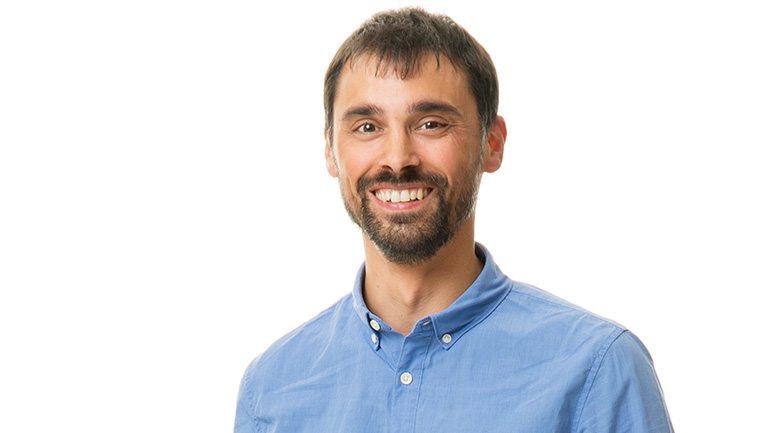
For us, Open Lab works very well. It's easy to book and get support and is obviously made for users who know how to use the instruments and how to interpret the results.
For us, Open Lab works very well. It's easy to book and get support and is obviously made for users who know how to use the instruments and how to interpret the results.
Roberto Ortiz – Senior Scientist, CR Competence
What does CR Competence do?
CR Competence is a consulting company specialised in helping our clients with issues related to colloidal systems, surfaces and physical chemistry. We help our customers with chemistry problems in their products or processes. We also perform scientific due diligence, work with product development, and with problem-solving.
How has the experience at Open Lab been for you?
For us, Open Lab works very well. It's easy to book and get support and is obviously made for users who know how to use the instruments and how to interpret the results.
We have used vpSEM-EDS in many of our projects. With that instrument, we can see what materials look like at the nanoscale and at the same time get chemical information from the surfaces. It has come into use in very different projects such as imaging the morphology of a powder for the pharmaceutical industry and for filters in a cooling system with corrosion problems.
How has Open Lab benefitted you?
Being able to access advanced measuring instruments without having to own one. Such instruments are really expensive. In our case, we only need to use them a few times a year and it wouldn't be financially viable to own one.


